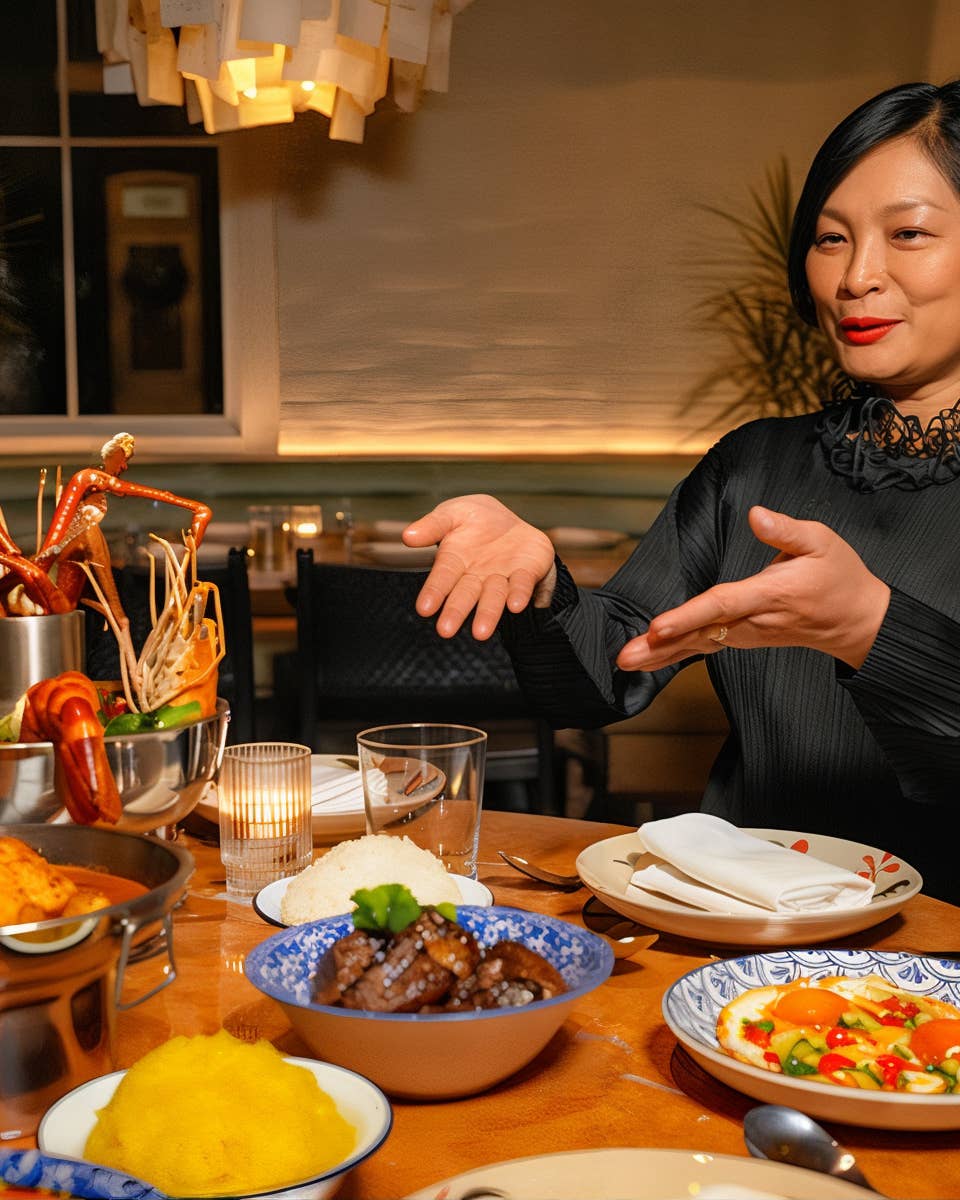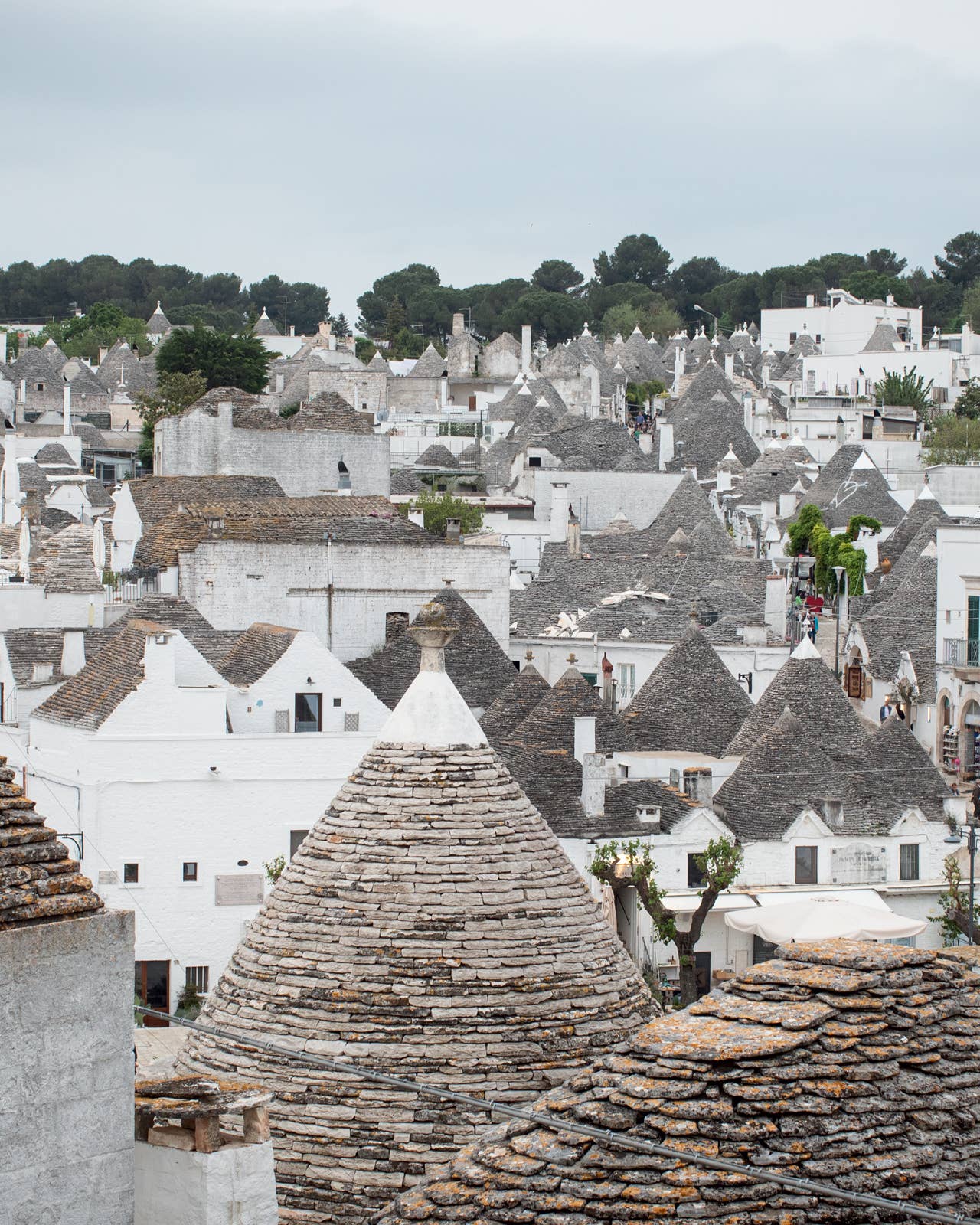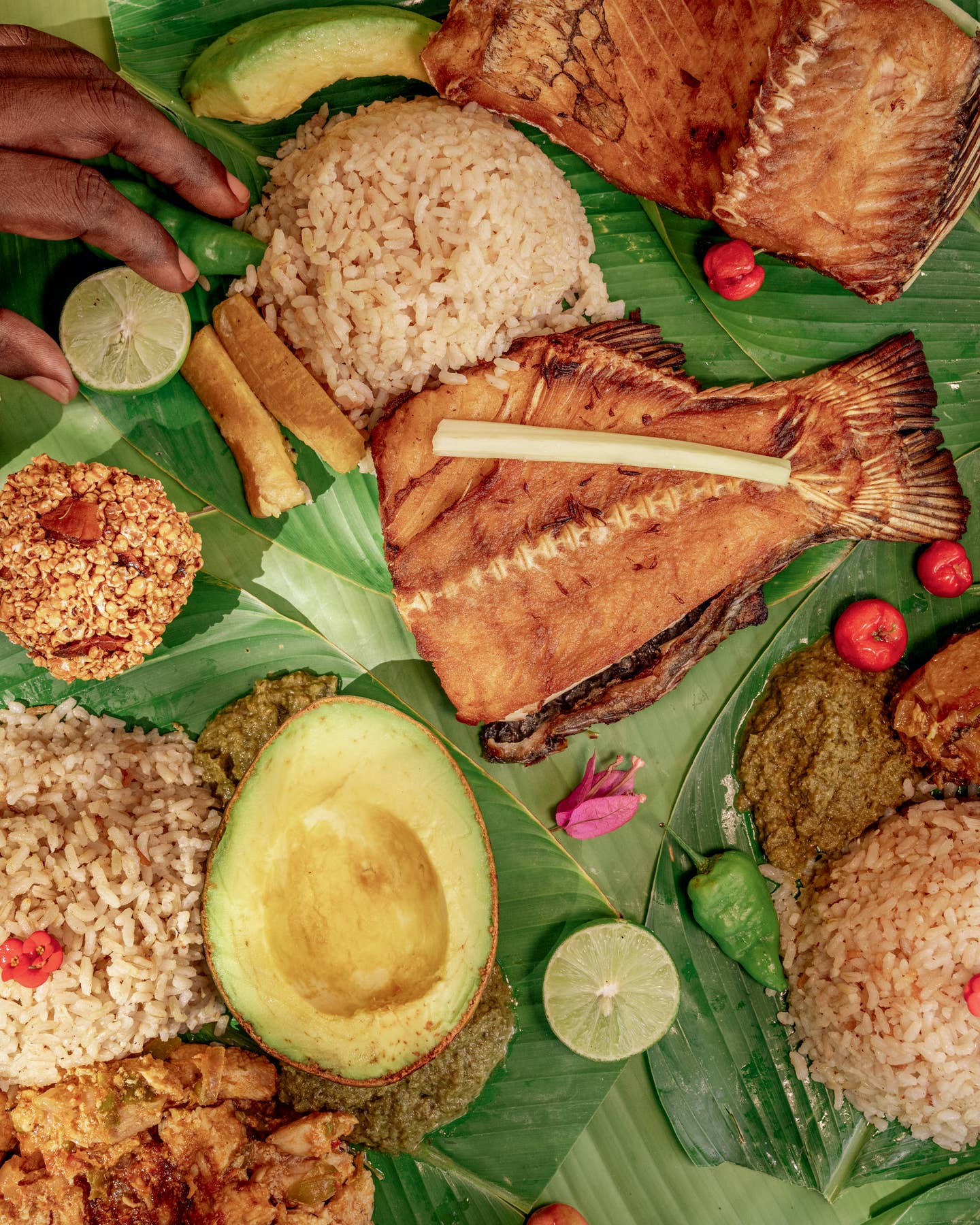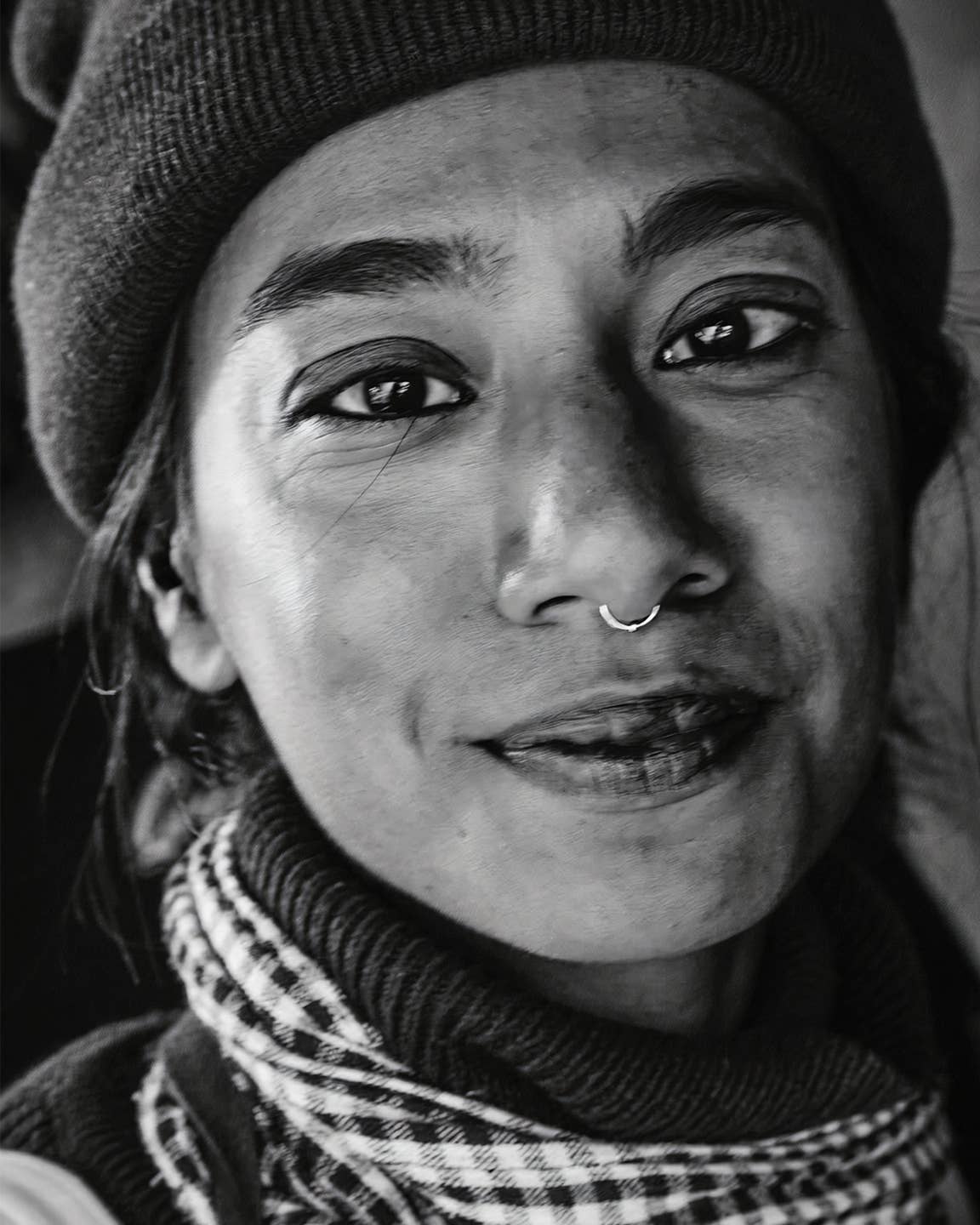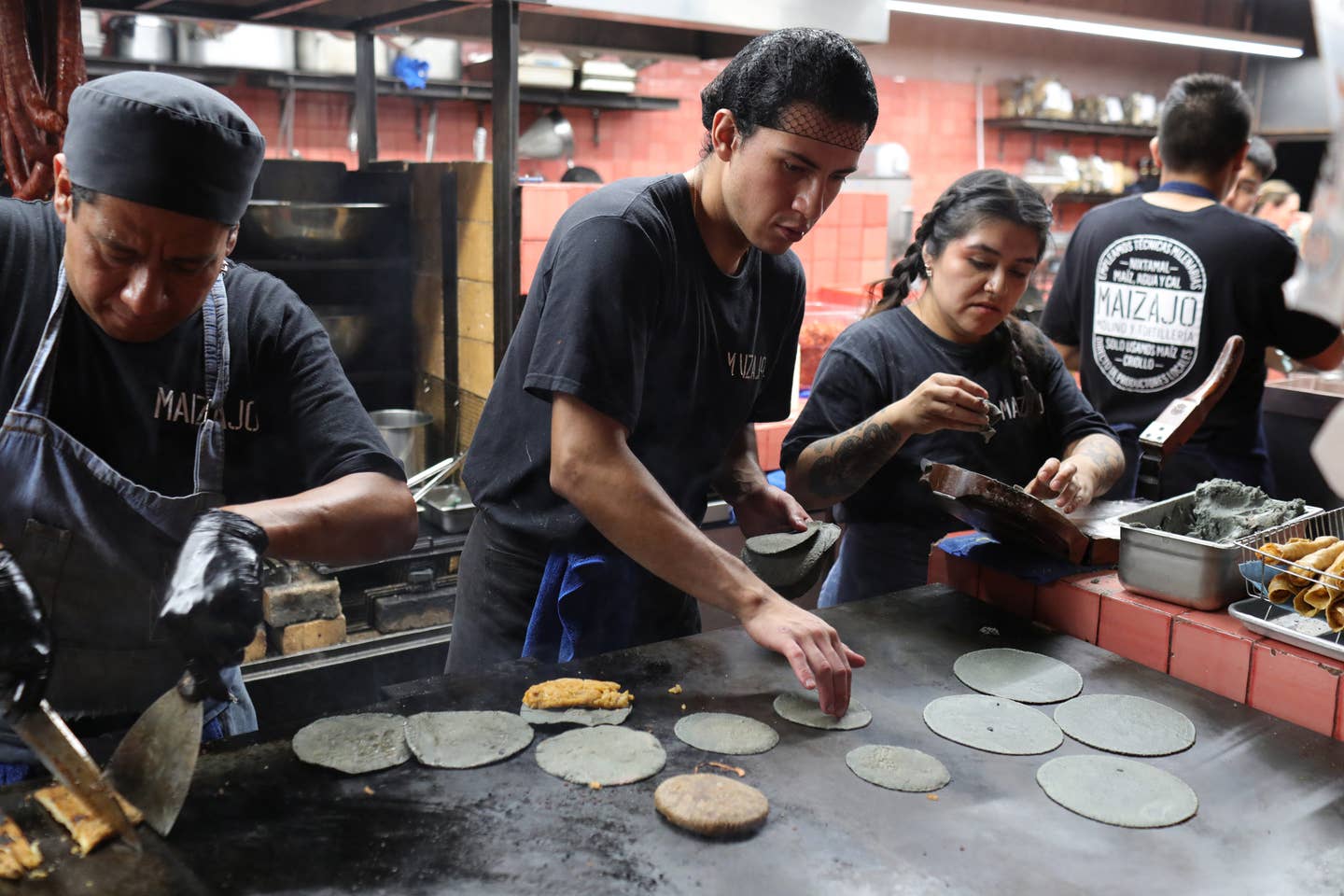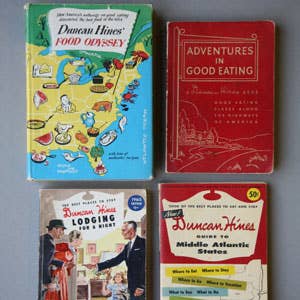
Adventures in Good Eating
By late June, we—that is, Todd Coleman, SAVEUR's food editor, and James Oseland, the editor-in-chief—had been planning our trip for months and were finally ready to hit the road. The plan? To drive from Chicago to New York in a wide-ranging arc, stopping at restaurants, diners, taverns, and inns that had been featured in a famous series of culinary guidebooks from the 1930s, '40s, '50s, and '60s and had managed to stay in operation ever since. The books—remarkable compendiums of American eats published annually from 1936 until 1962—belonged to the once famous but now largely forgotten Adventures in Good Eating series published by the pioneering travel guide writer and cake mix mogul Duncan Hines. We knew that Hines (see The Man and the Mix) and the editors of the guidebook series he founded had helped revolutionize the way Americans ate on the road before the age of the interstate, and we were seized with the urge to follow in Hines's tire treads. What better way to connect with a fast-fading America, with that part of our culinary landscape that has resisted mass-scale homogenization? And what a great excuse to eat a lot of honest, good food. The idea (all due credit to Todd, who came up with it) appealed both to our sense of nostalgia and to our wanderlust; it also proved difficult to execute: even after narrowing the field by selecting just a single volume from each of the four decades the series was published, we had a list of hundreds of tantalizing possibilities, from the Beaumont Inn, an elegant-sounding country-ham-and-biscuits restaurant in Harrodsburg, Kentucky (from the 1938 edition), to a Lebanon, Ohio, stalwart called the Golden Lamb, which, the 1957 edition noted, once fed such illustrious guests as John Quincy Adams and Charles Dickens. But, as we set about researching these establishments, we were disappointed to find that nearly all had long since closed. And the majority of those that were still in business seemed to have retained little of their original character aside from the business's name. Felicitously, that left us with a pretty manageable selection of restaurants: about a half dozen of them, lying along a route that zigzagged across Illinois, Indiana, Kentucky, Ohio, West Virginia, and New York. Here is the true and unvarnished account of our journey.
Sunday (Day 1) We fly into Chicago's O'Hare airport in the afternoon and rent a car. The airport rental agency offers a veritable playground of choices. Standing before the massive, gleaming fleet, we pick a gray minivan, which, we concluded after much deliberation, was the modern-day descendant of the wood-paneled station wagon.
Our first stop is the 86-year-old Klas Restaurant in Cicero, the town, just outside Chicago, that was Al Capone's gangland fiefdom during Prohibition. The 1962 edition of Adventures in Good Eating describes Klas as having "colorful European architecture and interior design". When you're driving down Cermak Road, you can't miss it; it's a real-life gingerbread house. An ornate sign posted on the exterior reads HOUSE OF HAPPINESS. We go inside and are met by Bob Biddle, one of the owners. He is earnest and friendly, with a big Midwestern smile. (He's from Reno, Nevada, we later learn.) Cicero was once home to a thriving Czech community, he tells us. Looking around, we notice that the dining room is all but vacant. "We're trying to get the Czech immigrants to come back," says Biddle. "We do a lot of funeral banquets."
Biddle leads us to our table. The menu includes a mix of Bohemian and American specialties, such as beef goulash and barbecued chicken. The kids' section reads, "For the Beginners of Fine Dining." We order the liver dumpling soup and a host of other dishes. The soup is as beautiful as it is delicious: a tangle of thin noodles in a deeply flavored broth, with liver dumplings as big as a kid's fist. Later, Biddle takes us on a tour. The place has a decidedly eerie feel. Antler chandeliers cast a yellowish glow over dusty bric-a-brac and painted wooden European folk art. Biddle hands us some old slot machine coins that he found hidden behind a wall in a pouch. This place has its secrets. "The upstairs is haunted," he says.
Monday (Day 2) In the early morning, we leave Chicago and head east, to Indiana. We exit Interstate 80 onto southbound U.S. Highway 421. Farmland rolls away from us on both sides of the road. We come to a crossroads and take a right onto U.S. Highway 30, entering the city of Valparaiso and landing smack-dab in a jungle of box stores and chain restaurants. We're looking for a place called Strongbow Inn. According to the address we have, it's supposed to be right here. We see a Burger King. There's a Bob Evans. Across the street is a Wal-Mart. Finally, we spot the place—right in front of us, dwarfed by the towering signage of its neighbors.
At the front of the restaurant we are confronted with a large cement turkey. "Chicken is a bad word around here," says the manager, Barb Raschke, when we walk inside. She's worked here for 33 years; when she started, the restaurant was called the Strongbow Turkey Inn. Prior to that it was a turkey farm. "We raised our last batch of turkeys in 1981," says Raschke. As we look over the menu, turkey does seem to be the name of the game. We order pretty much everything turkey-related on offer. The turkey noodle soup has thick, light-as-air house-made noodles. The turkey pie arrives under a fancy metal cloche, beneath which lies a crisp round of pastry splashed with gravy and adorned with a single, diamond-shaped piece of diced red pepper. There are also fried turkey livers smothered with caramelized onions and framed with a triangular formation of crisp bacon. "Enjoy!" says Angela, our waitress.
Later that afternoon, we get back on U.S. Highway 30 and head east and then south, past windswept corn and soybean fields, grain silos, and the detritus of old farms. We stay the night in Lafayette, Indiana.
Tuesday (Day 3) The chatter of more than 60 white-haired women fills the room, drowning out the Muzak playing softly in the background. Waitresses in baby blue smocks rush by cradling armloads of fried chicken. The lady to Todd's right introduces herself as Anna Schneider. "We're the Lilly Lunch Bunch," she says, explaining that she and her friends are retirees from the Eli Lilly pharmaceuticals company, based nearby. "We've been having lunch here together for years."
We're on the north side of Indianapolis, at Hollyhock Hill, a family-style chicken dinner restaurant that has been around for 80 years. The dining room is under the direction of Jay Snyder, a kindly, middle-aged gentleman. "The original dining room used to be a summer cottage," says Snyder. "I started here, cleaning up the yard, when I was 16." The kitchen's windows have flowery curtains, and the countertops are pink Formica. Tom Sheron, a goateed man in his 30s, has been frying the chicken here for 15 years. James declares it some of the best he's had; he asks what the secret is. "Lard," says Sheron. "That's the only way to fry chicken." The dinner comes with a relish tray, mashed potatoes with cream gravy, biscuits, cottage cheese, pickled beets, apple butter, green beans, and corn. "When this place started it was on a dirt road; it was way out in the country," says Snyder.
After lunch, Todd announces that he needs a haircut. Jay Snyder directs us to a friend of his who has a barbershop down the road. Todd asks the barber whether she's heard of the Nashville House in Nashville, Indiana, our next, and much anticipated, stop. The owners had mailed us their menu before we left, and, to our great pleasure, it was handwritten. We've been looking forward to its Hoosier ham and sassafras tea. "It's so nice there," the barber tells Todd. "You're going to love it."
The restaurant proves easy to spot: it's a faux log cabin sitting at a busy intersection; it's flanked by a Carmel Corn Cottage and a Colonial Craft Shop, and it looks about as authentic as a Cracker Barrel. Looks can be deceiving, but we decide not to go in. That night we stay at an Econo Lodge next to another Wal-Mart.
Wednesday (Day 4) Todd is wearing thin white cotton gloves and carrying a tray of old, empty Duncan Hines cake mix boxes. We're at the library and museum of Western Kentucky University in Bowling Green. Duncan Hines was born and raised in this town, and we felt compelled to pay a visit. The university is in the midst of installing a permanent exhibit dedicated to Hines's life and times called "Recommended by Duncan Hines", which will feature a life-size mannequin of the man and his actual home test kitchen. We're sifting through the boxes of ephemera—matchbooks, postcards, ice cream containers, advertisements—that are to be displayed. With us is Cora JaneSpiller, Duncan Hines's great-niece, who is now 80 years old.
Spiller takes us out to dinner along with a few other Duncan Hines experts and enthusiasts. She tells us she is wearing a dress that once belonged to Clara Hines, Duncan's wife. "If they can't be here to drink and toast with us," Spiller says, referring to Duncan and Clara, "they can be here in clothing." As Bowling Green no longer harbors a restaurant that was officially recommended by "Uncle Duncan", we dine instead at the Smokey Pig Bar-B-Q, where we sample sweet and smoky thin-cut pork shoulder and wash it down with Nehi orange soda. Later, Spiller takes us to Duncan Hines's former home, now a funeral parlor.
Thursday (Day 5) We're rolling across central Kentucky now. We drive down U.S. Highway 127 to State Highway 78 and then over to State Highway 52, on our way to the town of Berea, home to Boone Tavern. Situated on the campus of Berea College (a tuition-free Christian school), the 99-year-old tavern and hotel earned some degree of national fame under the management of Richard T. Hougen, who managed the establishment from 1940 to 1976. During his tenure, he perfected such dishes as Pork Chops the Tricky Way, Chicken Flakes in a Bird's Nest, Kentucky Chess Pie, and Yeasty Dinner Rolls. The cavernous kitchen is bright and airy and straight out of the 1940s. As with every place we've visited so far, many of the employees have been here for a long time. Two of them, Bruce Alcorn and Rawleigh Johnson, have worked in the kitchen for more than 30 years. "I'm just part of the fixtures," says Alcorn. Alcorn and Johnson remember that back when U.S. 25 was the main thoroughfare—before the nearby interstate was put through—they served 200 to 300 people a day. "Now it's tweaked down," says Alcorn. "I've seen a lot of changes, competition coming in." One thing that hasn't changed is the spoonbread, a creamy corn bread souffle served before every meal. It appears to be the most popular item served. "People say that the spoonbread isn't the same as it was way back when," says Alcorn. "But me and Rawleigh made it back then; nothing's changed." We got here just in time; the tavern and hotel are scheduled to undergo an extensive renovation in a couple of months.
**Friday (Day 6)* *We've exited the street into pitch darkness. Once our eyes adjust to the dim light, we are able to make out an elegantly appointed wood-paneled room. The center of the room is occupied by a huge, rectangular bar. This is the Pine Club in Dayton, Ohio, a cool, windowless supper club. Dan Nooe, the general manager, greets us. "Sorry that we're not that busy," he says. Every booth is full. "Unless we're double around the bar, we're not busy." The tables are loaded with classic steak house food: plump strip steaks and rib eyes, sweet-and-sour stewed tomatoes with a topping of buttered croutons, herring slathered in sour cream, creamed spinach, and shredded iceberg lettuce topped with thick blue cheese dressing.
Following our dinner of calf's liver with sauteed onions and chopped steak, we decide to stay at a bed-and-breakfast not far from downtown Dayton. The rooms are stuffed with every doodad imaginable. Inside Todd's, there's a Howdy Doody doll in a baby carriage. Interminable layers of lace curtains keep the outside world out. A floor-to-ceiling stuffed rabbit guards James's room, at the end of the hall.
Saturday (Day 7) We didn't sleep well at the B&B. We spend the morning and early afternoon driving in silence through Ohio. Several hours later we are sitting at the bar of Figaretti's, a spaghetti house in the West Virginia town of Wheeling. "We have a lot of loyal customers," says the bartender, Jorge Shavedra. "People who have been following Figaretti's for 50 years—they come from all over." Tony Figaretti Sr., the owner, who also happens to be the boxing commissioner of West Virginia, is greeting customers at the door; he's clad in loafers and wearing a loose gold bracelet. "Hey you! How ya doing?" he bellows to a smartly dressed man coming through the door. "This guy always shows me up. His shirt. His shoes."
Five brothers started Figaretti's back in 1948. It used to be called Figaretti's Cricket Club. We sit below a gilded, framed portrait of Mr. and Mrs. Figaretti. Todd has a manhattan and nibbles on some garlic bread. Then we dig into the Godfather II, a delicious dish of linguine tossed with shrimp, mussels, peppers, onions, and tomatoes in a white wine and garlic sauce, sprinkled with grated parmesan cheese.
We decide to drive several miles south, to Moundsville. Halfway into town, in front of an abandoned bowling alley beneath a darkening early-evening sky, we spot the Reilley's Arms Motel. We pull over and check in to our rooms. We seem to be the only guests. James settles down in front of a Charlton Heston movie. Todd pops a quarter into the coin slot affixed to his bed's headboard, but the magic fingers don't work. He falls asleep anyway.
Sunday (Day 8) Homeward bound. Running behind schedule, and feeling the weight of the coming workweek, we resign ourselves to Interstate 80. We speed eastward, stopping for dinner at an overly air-conditioned Denny's somewhere in Pennsylvania. We get stuck in traffic as we approach the George Washington Bridge, giving ourselves plenty of time to peer across the Hudson River at the lights of New York City, the end of the road.
Keep Reading
Continue to Next Story




